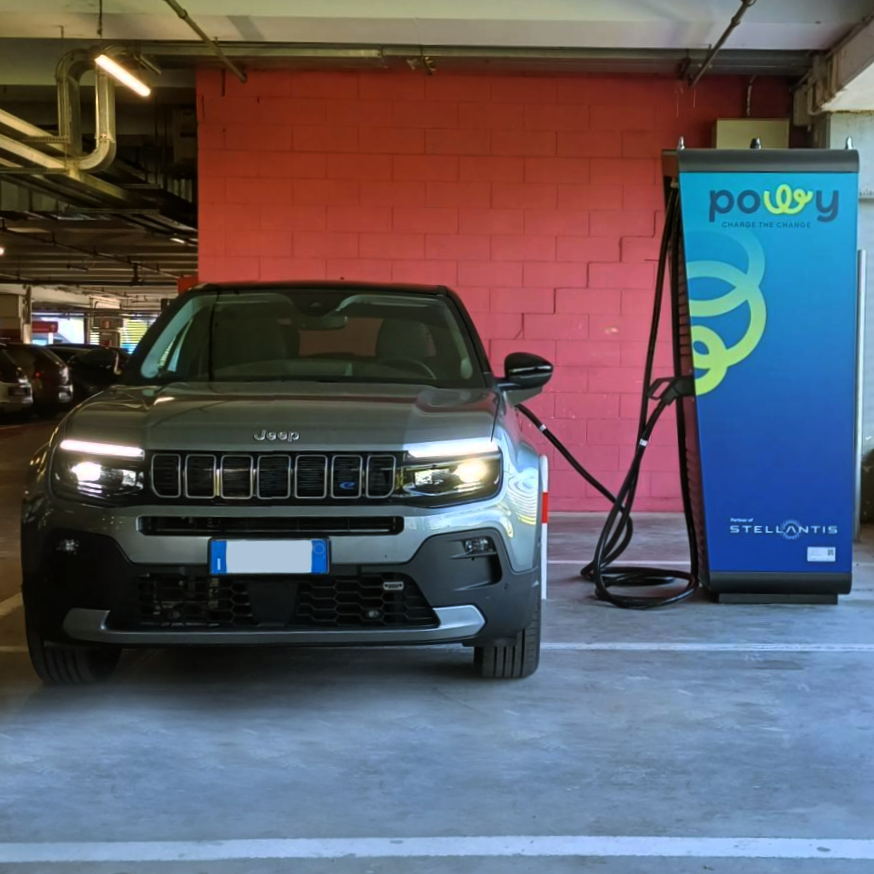The hidden benefits of electric mobility: comfort, efficiency and sustainability for tomorrow's driving


The transition to the electric vehicle is commonly promoted through tangible economic arguments: tax exemptions, purchase incentives, and fuel savings. However, behind these immediately visible benefits lies a much more nuanced value proposition that radically transforms the everyday experience of mobility.
Adopting electric mobility is not simply about changing propulsion technology, but embracing an ecosystem of benefits that impact quality of life, health, and the driving experience in ways that are often underestimated.
The electric motor not only eliminates local emissions, but qualitatively elevates the entire driving experience through technical features that directly affect comfort and performance.
Theabsence of the noise typical of internal combustion engines is one of the advantages most valued by drivers of electric vehicles, although it is often overlooked in pre-purchase evaluations. Running silence is not just a matter of personal comfort, but has broader implications for mental and physical health.
Reducing endogenous noise inside the passenger compartment significantly decreases acoustic stress for driver and passengers, which is particularly evident in daily urban commutes and long journeys. Studies on urban noise pollution show that traffic is the main source of ambient noise in cities, with documented public health consequences: sleep disturbance, cardiovascular stress, and reduced concentration.
The mass adoption of electric vehicles thus contributes to the reduction of urban noise pollution, a public health issue frequently ignored in discussions of sustainable mobility. In cities such as Oslo, where electric car penetration has exceeded 30 percent of the car fleet, there are measurable reductions in ambient noise levels during peak hours.
Regenerative braking represents a technological innovation that completely transforms driving dynamics. When the driver releases the accelerator pedal or applies the brakes, the electric motor reverses its function by becoming a generator that converts kinetic energy into electrical energy, sending it back to the battery.
This system is particularly effective in urban settings characterized by stop-and-go traffic, where conventional vehicles dissipate energy into heat through conventional brakes. In contrast, regenerative braking can recover up to 15-25% of the energy used, extending the effective range and dramatically reducing wear and tear on mechanical brakes.
Experienced EV drivers learn to manage deceleration almost exclusively through the release of the accelerator, using the physical brakes only in emergency situations or complete stops. This approach, termed "one-pedal driving," quickly becomes natural and contributes significantly to overall vehicle efficiency.
Instantaneous engine torque, available from the very first revolutions, is an inherent feature of electric motors that clearly distinguishes them from thermal powertrains. This immediate delivery of maximum torque results in rapid, linear acceleration, making driving safer and more responsive, especially when overtaking, entering a traffic circle or entering a highway.
The energy efficiency of electric motors reaches values between 80% and 90%, compared to 30-40% for the most efficient internal combustion engines. This means that a much higher percentage of the energy supplied is actually converted into motion, drastically reducing waste and optimizing performance.
Even mid-segment electric vehicles offer brilliant performance, with 0-60 mph acceleration that rivals conventional sports cars, while maintaining low fuel consumption and zero emissions in urban settings.
In addition to the savings on charging compared to the cost of fossil fuels, there are multiple economic factors that significantly increase the overall affordability of electric vehicles in the medium to long term.
An internal combustion engine includes thousands of moving mechanical components: pistons, valves, camshafts, timing belts, complex cooling system, exhaust system with catalytic converter. This complexity results in high routine and extraordinary maintenance costs over the life cycle of the vehicle.
In contrast, an electric motor has an extremely simpler structure, with 80-90% fewer moving parts than an internal combustion engine. This simplicity of construction generates concrete benefits: no periodic engine oil changes, elimination of air, oil and fuel filter replacement, no timing belt and clutch maintenance, dramatic reduction in brake pad wear due to regenerative braking, and greater overall reliability with less risk of mechanical failure.
Industry studies estimate that routine maintenance of an electric vehicle costs on average 30-40% less than an equivalent thermal vehicle over 8-10 years of use. This saving, added over time, can exceed several thousand euros, contributing significantly to the Total Cost of Ownership (TCO) calculation.
Although the price of electricity experiences fluctuations related to the energy market, it remains structurally more stable and predictable than fossil fuels, which are subject to geopolitical volatility, financial speculation and international market dynamics.
The ability to recharge at home by taking advantage of nighttime or bi- hourly electricity rates allows for noteworthy financial control. Those with home photovoltaic systems can also almost completely zero out charging costs, turning the sun into free fuel and making the vehicle energy autonomous.
With a 6 kW home photovoltaic system and storage battery, a household can cover up to 80-90% of its energy needs for electric car charging, reducing dependence on the grid and maximizing economic savings.
In addition to purchase incentives, electric vehicles benefit from permanent or multi-year exemptions from automobile tax bills in almost all Italian regions, with annual savings that can exceed 300-600 euros depending on vehicle power. Lombardy and Piedmont offer permanent exemptions, while most other regions provide at least 5 years of exemption from registration.
Many municipalities also offer free or reduced-rate parking in pay zones (blue stripes), free access to Limited Traffic Zones (LTZs) and express lanes, generating significant indirect savings for those who use their vehicles daily in urban areas.
The electric transition generates positive impacts that transcend the individual dimension of the vehicle owner, contributing to the economic and social development of the area.
The energy transition in the automotive sector acts as an economic driver, generating new market segments and new jobs. According to studies by the European Commission, the electric mobility sector will create more than 800,000 new jobs in Europe by 2030, in the areas of battery production, installation and management of charging infrastructure, specialized maintenance, and software development for energy management.
These jobs are characterized by high skills and above-average pay in the traditional manufacturing sector, contributing positively to the national economy and creating opportunities for skilled workers.
Growing energy demand related to electric vehicle charging is driving grid operators and utilities to make massive investments in modernizing electricity distribution infrastructure. These investments, estimated in the tens of billions of euros over the next few years, bring collective benefits: increased resilience of the electric grid, better integration of renewable sources, development of smart grid systems to optimize consumption, and reduced grid losses.
The ubiquity of charging infrastructure is also enhancing previously underserved land areas, creating new business opportunities for businesses, hotels and restaurants that install charging stations to attract customers.
With the expansion of Low Emission Zones (LEMZs ) in all major Italian and European cities, and the gradual tightening of access criteria that will gradually exclude even Euro 6 diesel vehicles, the electric vehicle emerges as the only solution to ensure unrestricted urban mobility in the long run.
Freedom of movement in the central areas of cities, where services, businesses and job opportunities are concentrated, is a growing competitive advantage for electric vehicle owners. By 2030, it is estimated that more than 500 European cities will have implemented ZBEs with increasingly stringent criteria, making access to city centers possible only for zero-emission vehicles.
In conclusion, electric mobility is not simply a technological alternative to traditional engines, but an integral transformation of the quality of the mobility experience. While the initial economic incentives catalyze attention, it is the less visible day-to-day benefits (acoustic comfort, driving enjoyment, stress reduction, reduced maintenance) that truly build driver loyalty to the world of e-mobility, creating satisfaction that goes far beyond mere financial savings.
Are electric cars really quieter, and does this make a difference in daily driving?
Yes, the absence of combustion engine noise significantly reduces noise stress for driver and passengers, improving comfort especially on urban commutes and long trips. It also helps reduce noise pollution in cities, with documented public health benefits.
How much do you really save on maintenance of an electric car?
Routine maintenance of an electric vehicle costs on average 30-40% less than an equivalent thermal car due to the lower mechanical complexity. Oil changes, filters, timing belts are eliminated, and brake wear is dramatically reduced due to regenerative braking.
What is regenerative braking and what benefits does it offer?
Regenerative braking turns the engine into a generator that recovers kinetic energy during braking and deceleration, sending it back to the battery. It allows 15-25% of the energy used to be recovered, extending the range and reducing wear and tear on mechanical brakes, particularly effective in urban settings.
What are the tax benefits for electric cars in addition to purchase incentives?
Electric vehicles benefit from 5-year or permanent car tax exemption in many regions of Italy (Lombardy and Piedmont offer indefinite exemption), free or discounted parking in pay zones, free access to LTZs and express lanes in several cities.
Do electric cars really perform better than thermal cars?
Electric motors offer instant maximum torque from zero rpm, providing faster and more linear acceleration than thermal engines. Energy efficiency reaches 80-90% versus 30-40% for combustion engines, converting much more energy into actual motion.

Powy is a company that owns, develops and operates Italy's leading independent network of public charging infrastructure for electric vehicles, with a growing presence in Spain as well.
Founded in Turin, Italy in 2018, Powy is at the center of the transition to more sustainable mobility, offering an innovative charging infrastructure that uses only 100 percent renewable energy.
Powy 's network includes quick, fast, and ultra-fast charging solutions strategically placed in public and private parking lots, supermarkets, shopping malls, and transportation hubs to ensure maximum convenience and accessibility for EV drivers. Each station is equipped with advanced technologies to provide a reliable and efficient charging experience.
Learn more: wpowy.energy